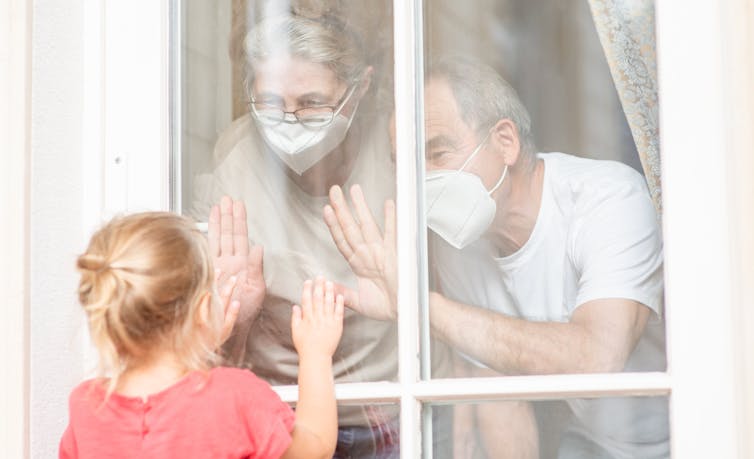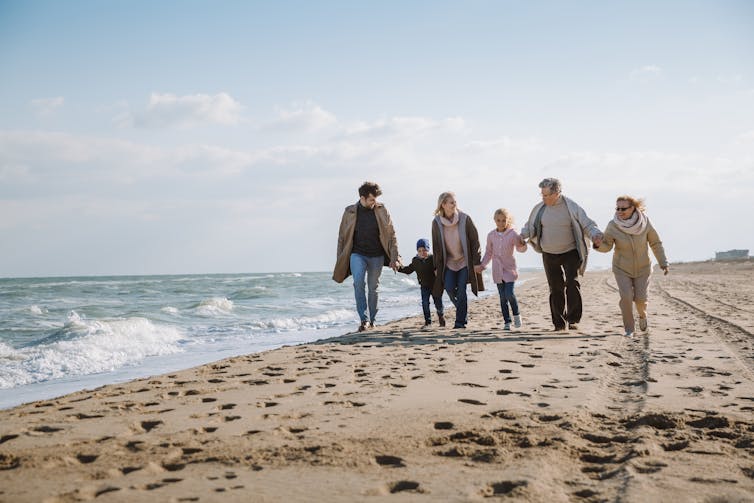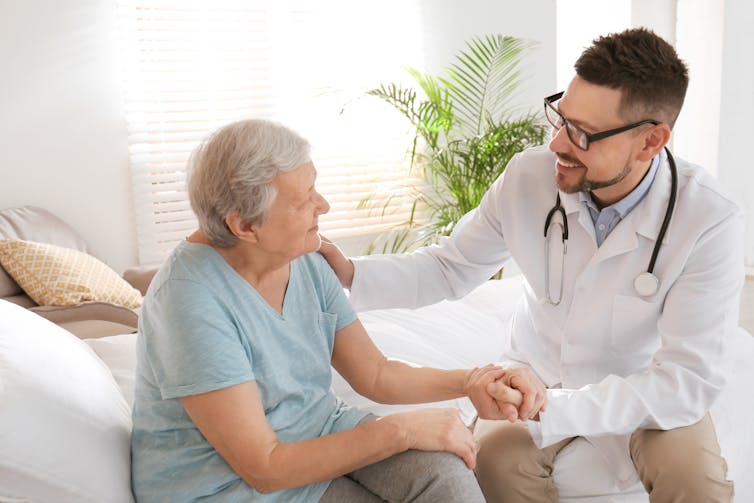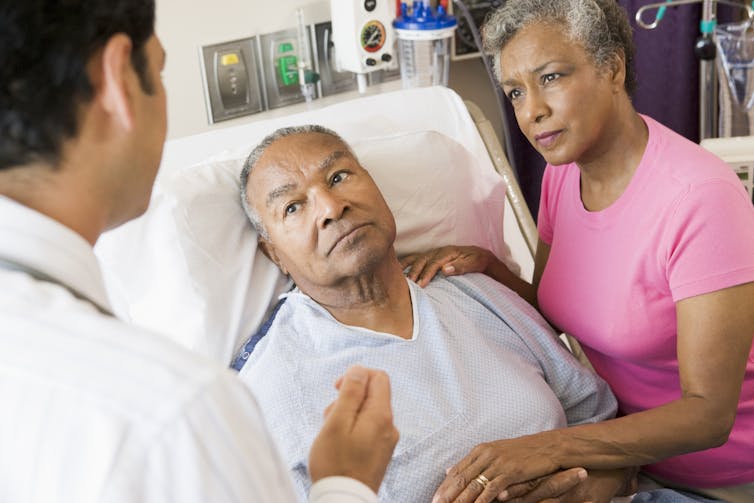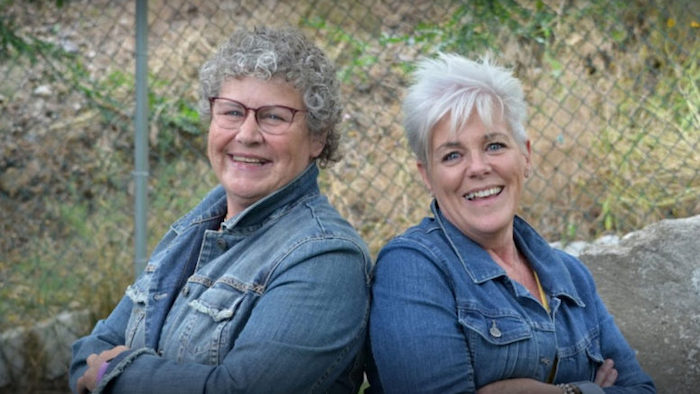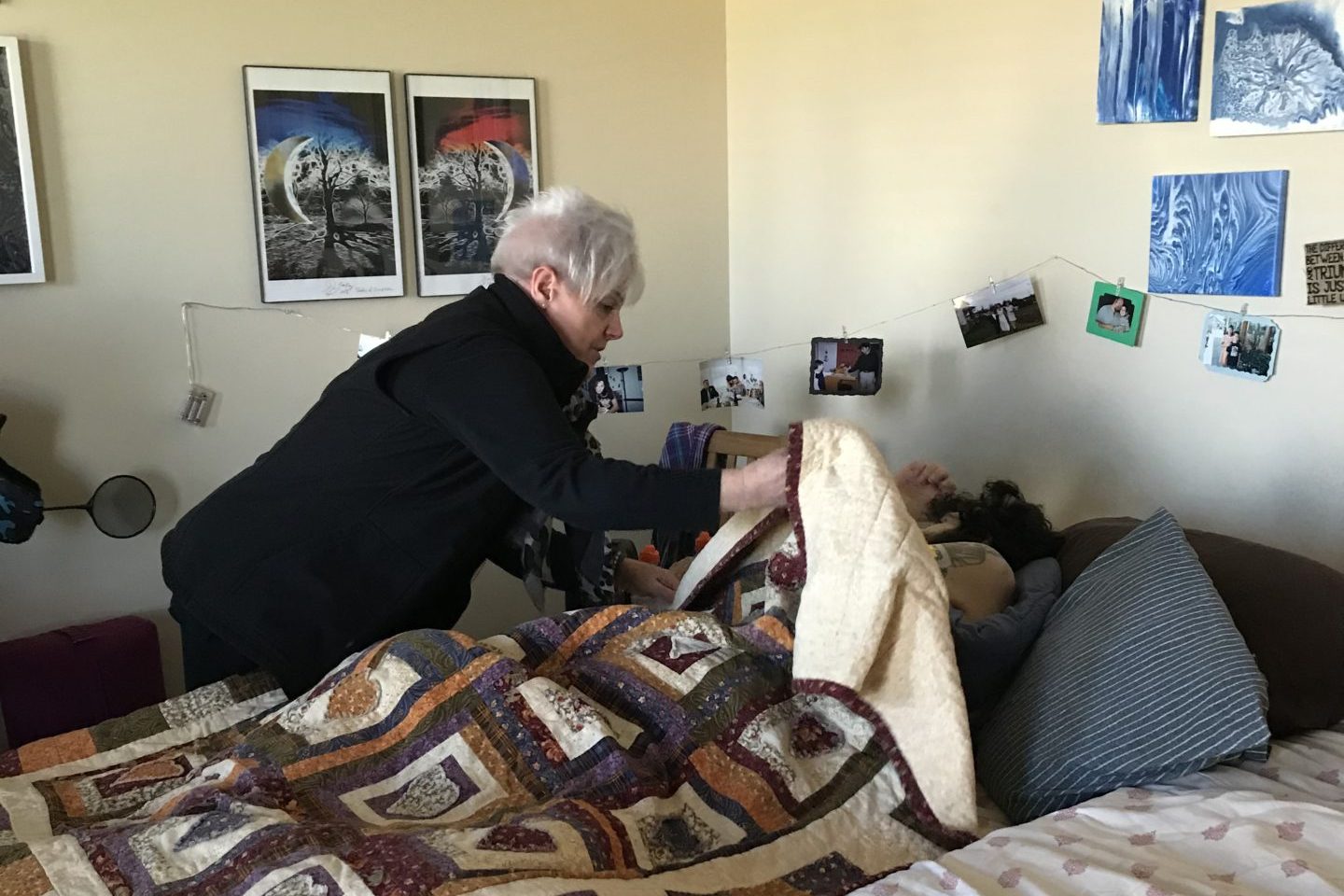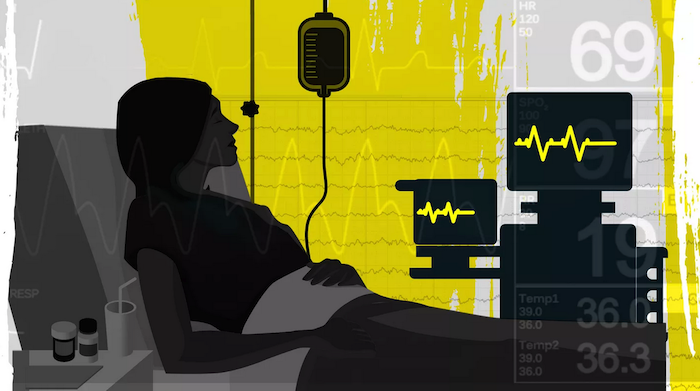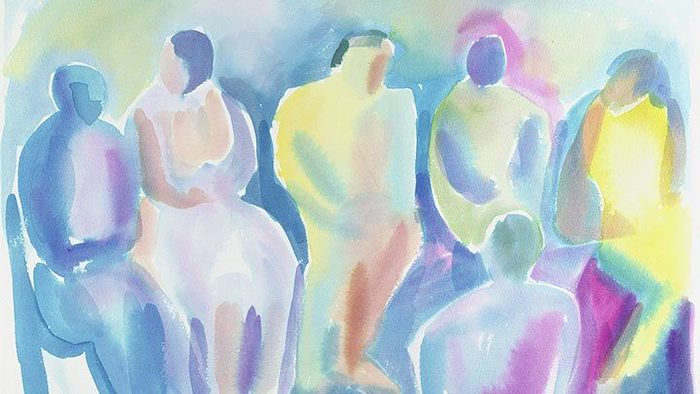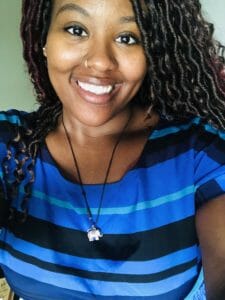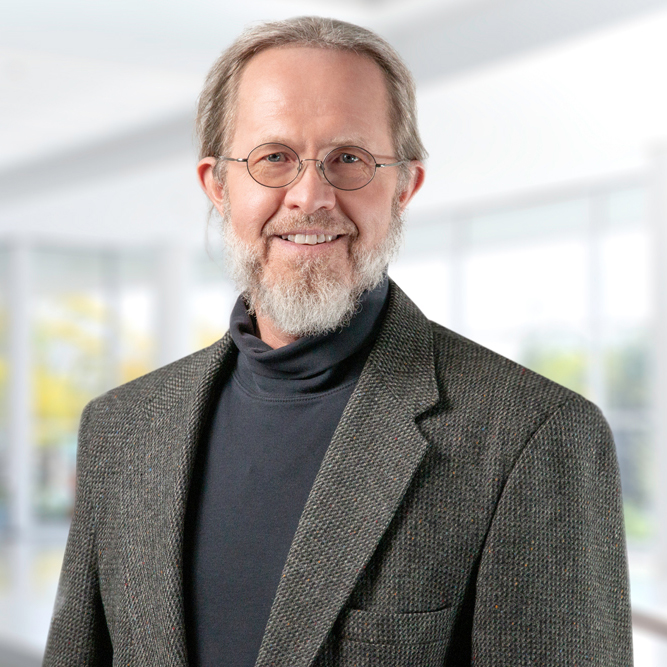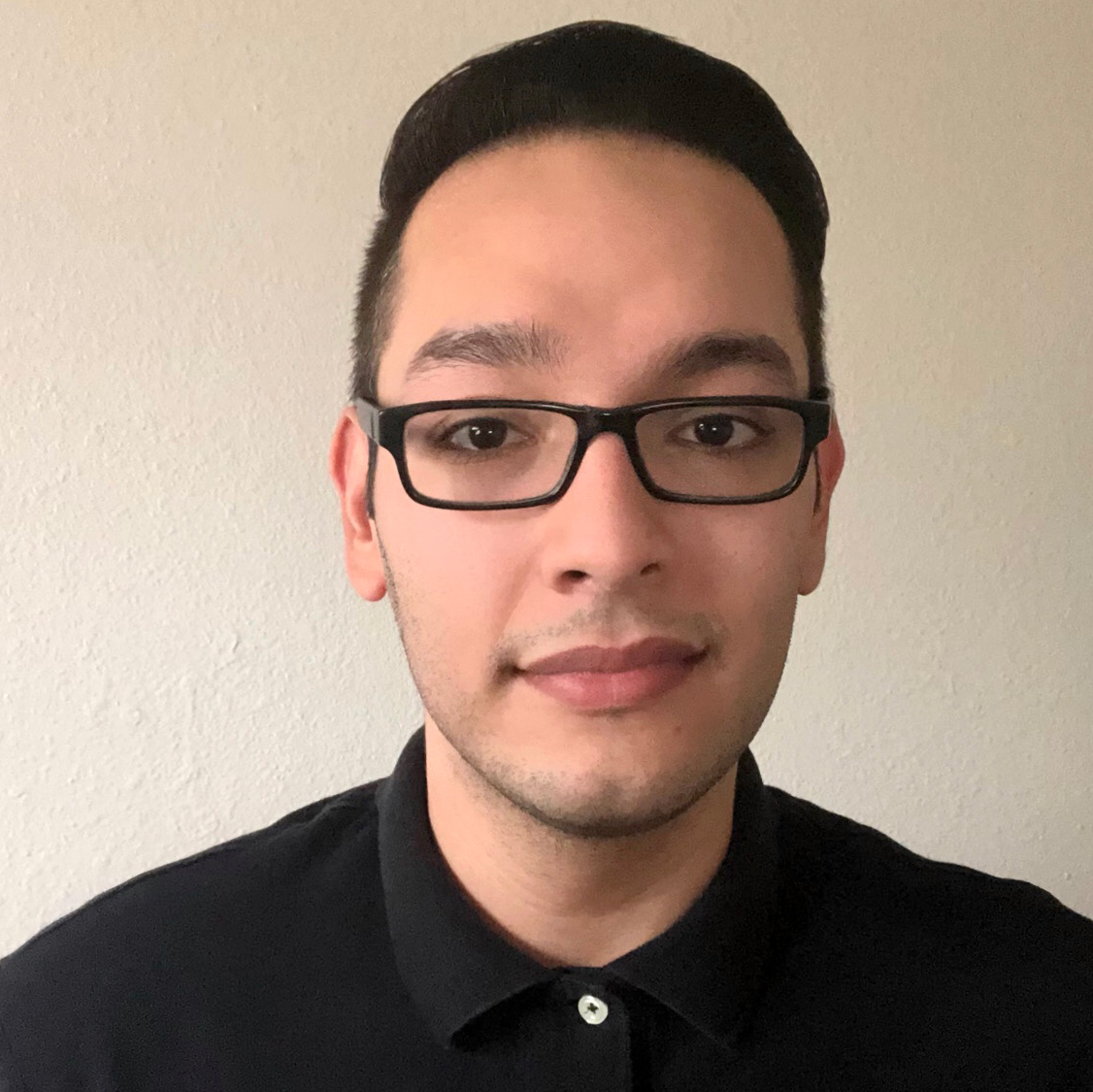COVID-19 prompted virtual visits, more interest in ‘death coaches’

by Robin L. Flanigan
Most Americans say they’d prefer to die at home, and indeed rates of home deaths are on the rise — a trend that may be fueled by the coronavirus pandemic and decreasing nursing home occupancy rates.
But having someone help navigate that end-of-life experience can be essential. Sometimes called a death coach or a death midwife, death doulas act as advocates for the dying, guiding everything from logistical preparations, such as advance care planning and funerals, to incorporating cultural and religious beliefs into final rituals.
“It’s kind of like being an event planner, but for death,” says Virginia Chang, a certified end-of-life doula in New York City.
COVID-19 has forced death doulas to adapt to pandemic restrictions and to new client needs. Those in private practice have had to offer more support over the phone and via Zoom, Chang says. At the same time, given a shortage of home care services, doulas have found themselves providing increased emotional support to caregivers, who may feel isolated or overburdened.
Virtual visits were an adjustment for Chang, who provides services through her business, Till the Last. “I do miss the intimate connection established between myself and the dying person through quiet conversation, presence and touch,” she says. “However, I have always said that empowering the caregivers to better care for their dying loved one meets my goal of better care for the dying person. So, I’m still doing my job.”
Chang has also noticed that patients and family members are getting in touch earlier than usual. Instead of being summoned weeks, or even days, before death, she is being contacted months, and sometimes years, before an anticipated death.
“They want to be better prepared,” she says. “By being better prepared, they’re better able to face death when it comes.”
Death doulas a ‘missing piece’ in care
Home has surpassed the hospital as the most common place of death in the United States for the first time since the early 20th century, according to a New England Journal of Medicine study published in 2019 (months before COVID-19 hit the U.S., which means that the number of home deaths is likely higher now).
Studies have shown that approximately 80 percent of Americans would prefer to die at home if possible, according to the Stanford School of Medicine. That figure may be higher now, after the pandemic focused people’s attention on death and dying, but COVID-19 has certainly amplified interest in the role of death doulas, says Henry Fersko-Weiss, 73, a licensed clinical social worker who, in 2003, created the first formal end-of-life doula program in the U.S., at a New York City hospice, and cofounded the International End of Life Doula Association.
“The recognition that death can be done differently is increasing because there’s been so much talk about death and dying,” he observes.
Though the work that death doulas do has probably gone on for thousands of years and been called different things, Fersko-Weiss says, the death doula movement gained steam two decades ago, offering meaningful services to those who felt limited by a traditional medical system.
“End of life needs more than crisis intervention,” he says. “This is a missing piece during a very demanding time in people’s lives.”
Fersko-Weiss cautions that people who are interested in working with a doula should know that no industry standards currently exist and that a certification by one organization doesn’t hold the same value as a certification by another.
Chang, for example, learned about end-of-life doulas after attending a talk that Fersko-Weiss gave. She has since been trained by the International End of Life Doula Association, the University of Vermont End-of-Life Doula Professional Certificate Program and the Visiting Nurse Service of New York.
Ask plenty of questions
Doulas support the dying, but they also provide services to those left behind.
Arlene Stepputat, 67, volunteers as a project manager for the nonprofit National Hospice and Palliative Care Organization’s End-of-Life Doula Advisory Council. The council’s Doula Grief Project, which offers free and confidential grief support services to those dealing with loss, grew out of the COVID-19 restrictions and the fact that most doulas couldn’t work in person with clients and families.
Experienced end-of-life doulas, trained in compassionate listening, provide one-hour telephone or videoconferencing sessions over four weeks as normal support systems continue to be taxed.
People who are considering the services of a death doula should ask plenty of questions, advises Stepputat, owner of Dying in Grace. “Interview that person like you would any other person you’d be making a contract with,” she says.
The National End-of-Life Doula Alliance offers an online state-by-state directory of doulas.
Some questions to ask a death doula are:
- What is their experience?
- What do they charge?
- Where were they trained?
- Why do they do this work?
Stepputat, who lives in Santa Barbara, California, was drawn to this occupation because of multiple losses: Four days before her 12th birthday, her father died in an accident; when Stepputat was 19, her girlfriend was murdered; and several street youths she worked with as a young adult died from suicide and other causes.
“Choose wisely because you are going to use this person in one of the most challenging times of your life,” Stepputat says. “It can also be one of the most sacred and beautiful times of your life. Creating a peaceful transition for someone you love is a gift.”
And the benefits of a doula-patient relationship go both ways, according to Terry Bonebrake, 58, of Grand Rapids, Michigan, a death doula who says she reaps rewards from her work.
“Anytime you do service work, your focus is on the other person, and yet you learn things you might not ever have known otherwise,” she notes. “What’s probably affected me the most is seeing how much every moment counts. This 60 minutes and the next 60 minutes will never be the same again.”
What do death doulas do?
Doulas “inform, support and guide, rather than advise or do,” explains Merilynne Rush, who offers end-of-life doula training, mentoring and certification through her consultancy, The Dying Year. Rush says end-of-life doulas can:
- Help form a circle of support and find tasks for those who want to help.
- Conduct a life review: Record stories, make a video or write letters to loved ones for future occasions.
- Provide hands-on nonmedical comfort, such as guided imagery, breathing and relaxation techniques, hand massage and essential oil therapy
- Sit bedside so family and caregivers can rest.
- Pray; meditate.
- Offer active listening.
- Share information about local resources, like hospice and palliative care.
- Prepare meals and do light housework.
- Discuss wishes for end-of-life care (advance care planning).
- Help arrange for (or keep) vigil during active dying.
- Share information about home funerals, green burials and body care after death.
- Offer grief support and ongoing visits after the death.
Complete Article ↪HERE↩!



